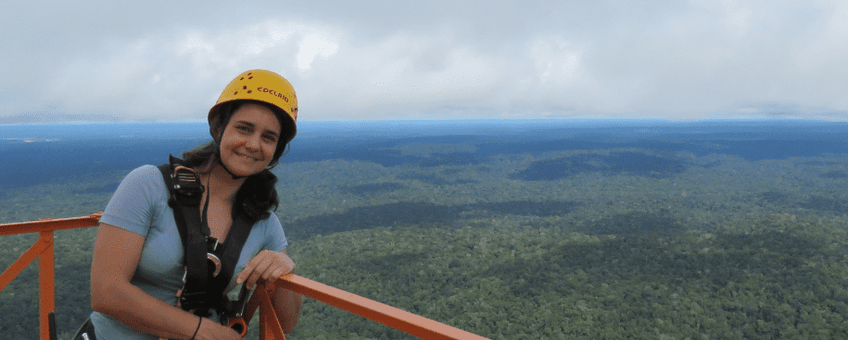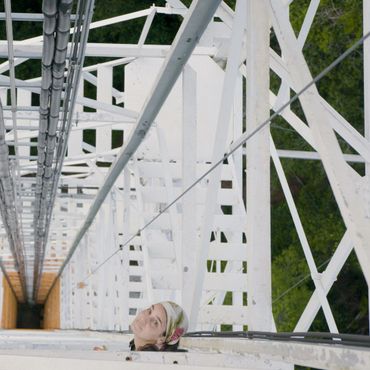
Laboratory in the sky reveals what lives above us
Naturalis Biodiversity CenterIt may be the last place on Earth with unpolluted air. Deep in the wilderness and high above the treetops of the Amazon, scientists capture pollen and fungi spores from the air. The Amazon Top Tower Observatory (ATTO) studies greenhouse gases, wind currents, and biodiversity. Which species hover above the Amazon forest and what does that tell us?
DNA-sequencing
Answering that question is not easy. Researchers need to capture as many pollen and spores as possible. The tower offers a unique opportunity to do that. A 'spore sampler,' a kind of vacuum cleaner sucks air from the atmosphere against a piece of tape, captures the pollen and spores at 300 meters altitude. Then next problem is that the different types of pollen and spores are very similar in appearance. To solve that, researchers work with DNA sequencing in the laboratory. One of those researchers is Sylvia Mota de Oliveira of Naturalis. "Every species has a unique DNA sequence," says Mota de Oliveira. "It is a big puzzle to figure out to which plant or fungal species each sequence belongs."

What is floating above the Amazon?
The study has offered some first insights. "There are still very few comparable studies, but we clearly see a difference in the proportion of which plant and fungal species occur in the Amazon compared to those in urban environments or rural areas," Mota de Oliveira says. "Nature reserves are scattered like small islands between cities and agricultural grounds, and this decreases the diversity of species. Therefore, in those places there are relatively more fungal species that thrive by infecting agricultural crops."
Ecosystems are connected
Important observations have also been made about the distribution of pollen and spores. "For example, not only are there pollen and spores from plant and fungal species found in the Amazon, but also species that came from outside the Amazon. Two of the three moss species we found are common in the areas surrounding the Amazon. So it seems that the likelihood of a plant species spreading over a long distance also depends on how common it is in adjacent areas."
Fundamental research

This research suggests that the composition of pollen and spores depends not only on what grows on the ground, but also on the most common species from surrounding ecosystems. Thus, these pollen and spores may spread, grow into new plants and fungi, and contribute to the development or even creation of new ecosystems. This is important to know, because it shows us that the sky above us is inextricably linked to nature below and around us.
More information
- The entire article "Life is in the air: An expedition into the Amazonian atmosphere" is published in the scientific journal Frontiers in Ecology and Evolution
- More information about the Amazon Top Tower Observatory can be found on the ATTO website
Text: Lieke Ruven and Sylvia Mota de Oliveira, Naturalis Biodiversity Center
Photo's: Naturalis Biodiversity Center; Sylvia Moto de Oliveira; Jorge Saturno
